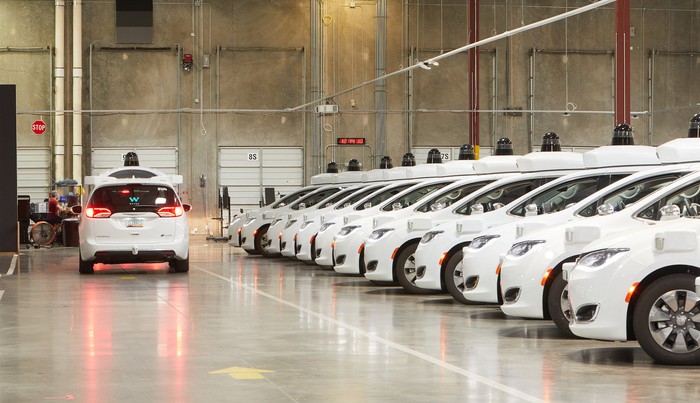There was a surprise announcement from Waymo this week that it took in $2.25 billion in outside investment. It’s noteworthy because it’s the first time since the Google self-driving-car project was launched in 2009 that funding had come from anywhere but Google or Alphabet. While many observers took this investment as a vote of confidence in Waymo, it may actually be a recognition of the realities of bringing automated vehicles to market.
It was just barely more than 18 months ago, that investment bank Morgan Stanley published a research note where it valued Waymo at $175 billion. This was based on its perceived leadership position in automated driving technology and its potential for massive new revenues from automated ride-hailing.
Just over a year later, the same bank slashed that valuation to $105 billion, still an extraordinarily large number for a company with effectively no revenues after 10 years of working on the technology. By comparison, Cruise was valued at $18 billion in its latest funding round and Argo AI at $7 billion when Volkswagen announced its investment last summer.
When the Waymo’s investment was announced, the company declined to discuss what valuation that investment was based on. I expected it was likely $40 billion to $50 billion. The Financial Times is now reporting that the number is $30 billion, still a huge figure for a company with barely any business, but a fraction of what was expected in 2018.
While most observers seemed surprised that Waymo was taking external investment, it actually should not have been a shock. Since becoming CFO of Alphabet in 2015, Ruth Porat has done much to reign in the once free-spending ways of the companies under the holding company’s umbrella.
Over the past two years in particular, Porat has shut down several of the projects once referred to as moon shots and now labeled “other bets” in Alphabet’s financial reports. Other divisions such as Nest have been folded into Google. Until now, Waymo has remained relatively unscathed.
However, that now appears to have changed as more people come to the realization that creating automated driving systems that are safe, robust and that people will trust is a far more difficult challenge than Elon Musk and others would have you believe. Now that Waymo has actually been operating a limited ride hailing service in Arizona for more than a year, the logistical challenges and costs are also becoming real.
I suspect Porat has looked at the numbers and come to the conclusion that Waymo and other similar businesses aren’t going to be money printing machines anytime soon. My guess is that when Waymo CEO John Krafcik went up the chain for approval of the 2020 budget which still relies almost entirely on Alphabet for income, Porat told him to start looking elsewhere.
The FT story also quotes Krafcik as acknowledging that Waymo may not pursue a consumer facing ride-hailing business after all. For the past six or seven years years, automated driving has been the latest gold rush to hit northern California with venture capitalists pouring money into startups. In many ways, this is likely to turn out much like the 1849 gold rush. A few prospectors will make money, but the real business is in the picks and shovels and the dungarees sold by Levi Strauss.
For Waymo licensing its Driver platform to automakers that want to put it on vehicles and deploy it may be a much more lucrative proposition than having to manage fleets and market to potential riders.
The inclusion of Magna as one of the investors in this round makes perfect sense in this context. Waymo has developed its own set of sensors in-house over the past decade and last year even began selling its short-range lidar to companies using it for robotics and research applications. But Waymo and its Alphabet siblings doesn’t have expertise in mass production of automotive grade hardware.
Magna which pulled back recently from its automated driving partnership with Lyft to focus again making the parts that go into driver assist and automation systems has that capability. Whether or not Waymo moves forward with its own branded mobility services, expect Magna to be the tier one supplier that builds lidar, radar and camera units and integrates them for automakers for either partially or fully automated systems in the coming years. By taking a piece of Waymo, Magna is setting itself up to be the Levi Strauss of this business.
Similarly, AutoNation with its nationwide network of automotive retail and service locations, likely wants to be the default fleet management and service provider for automakers that deploy vehicles with the Waymo Driver.
Even before Morgan Stanley published its absurd Waymo valuation, Krafcik told the National Governors Association that the “time period will be longer than you think” for transitioning to automated driving. He was right then, and these latest developments seem to indicate that others are agreeing with him.













![Hotstar Premium Cookies 2019 [*100% Working & Daily Updated*] Hotstar Premium Cookies 2019 [*100% Working & Daily Updated*]](https://tahav.com/wp-content/uploads/2019/11/Hotstar-Premium-Cookies-Free-100x70.jpg)



